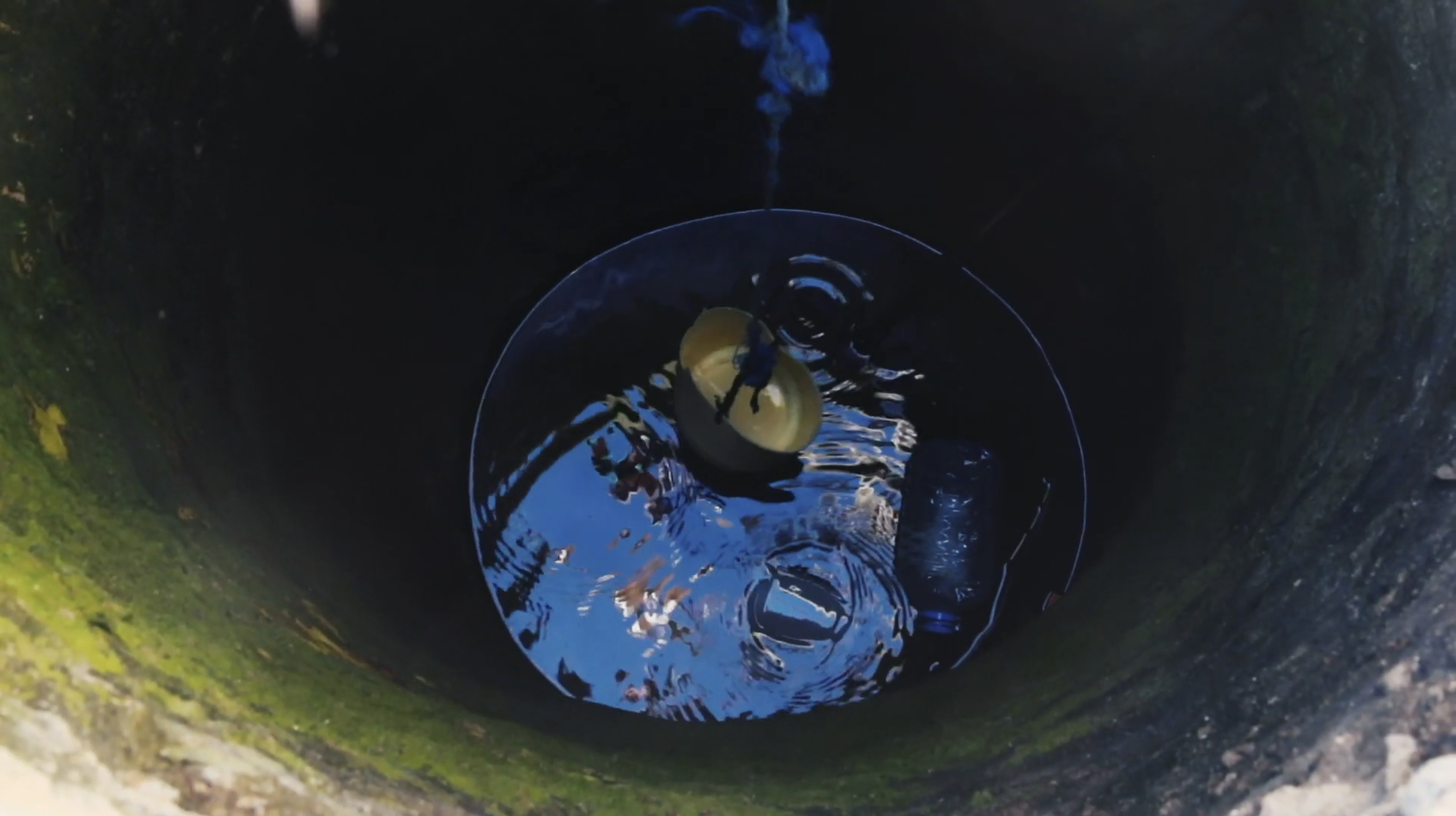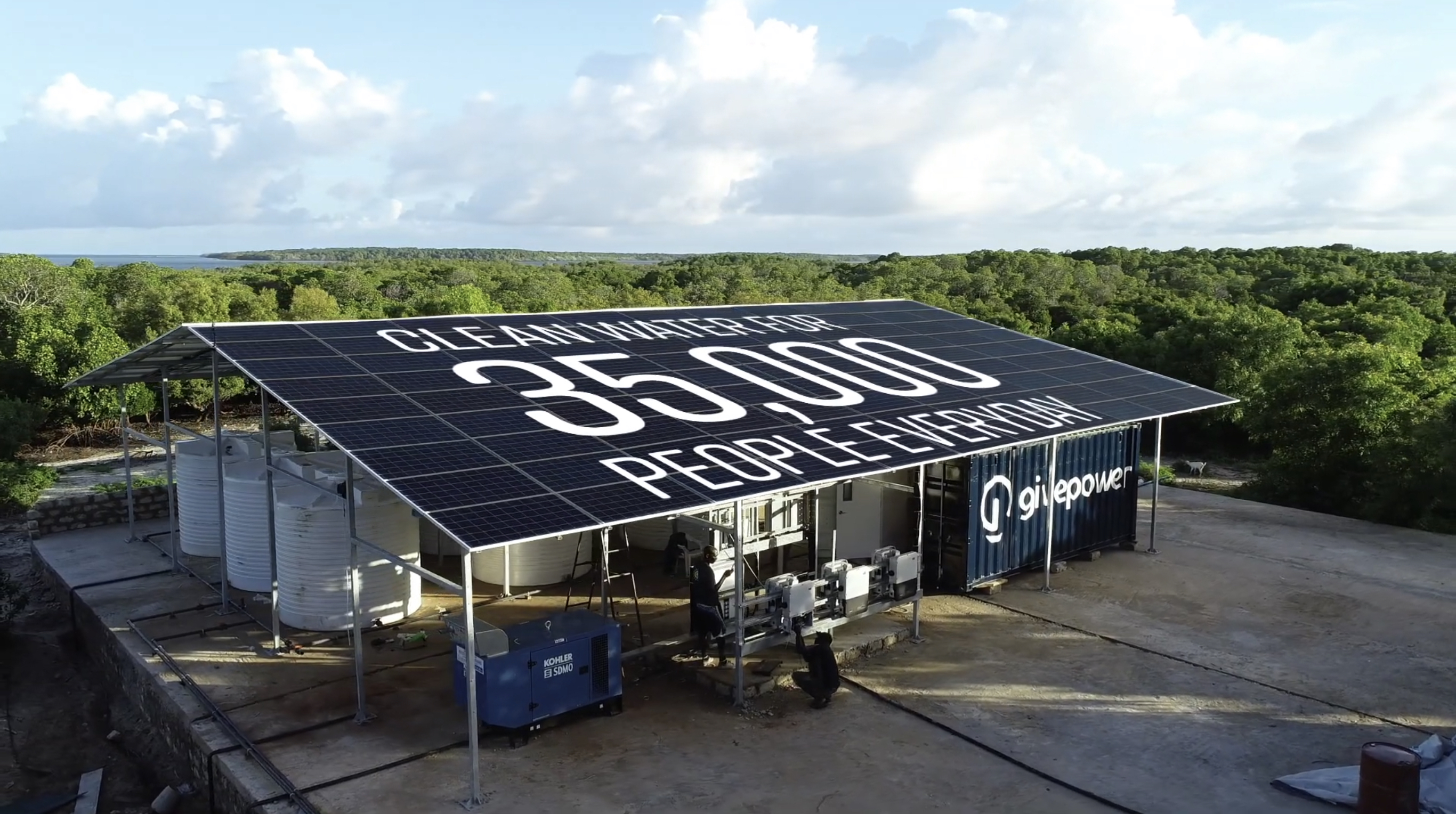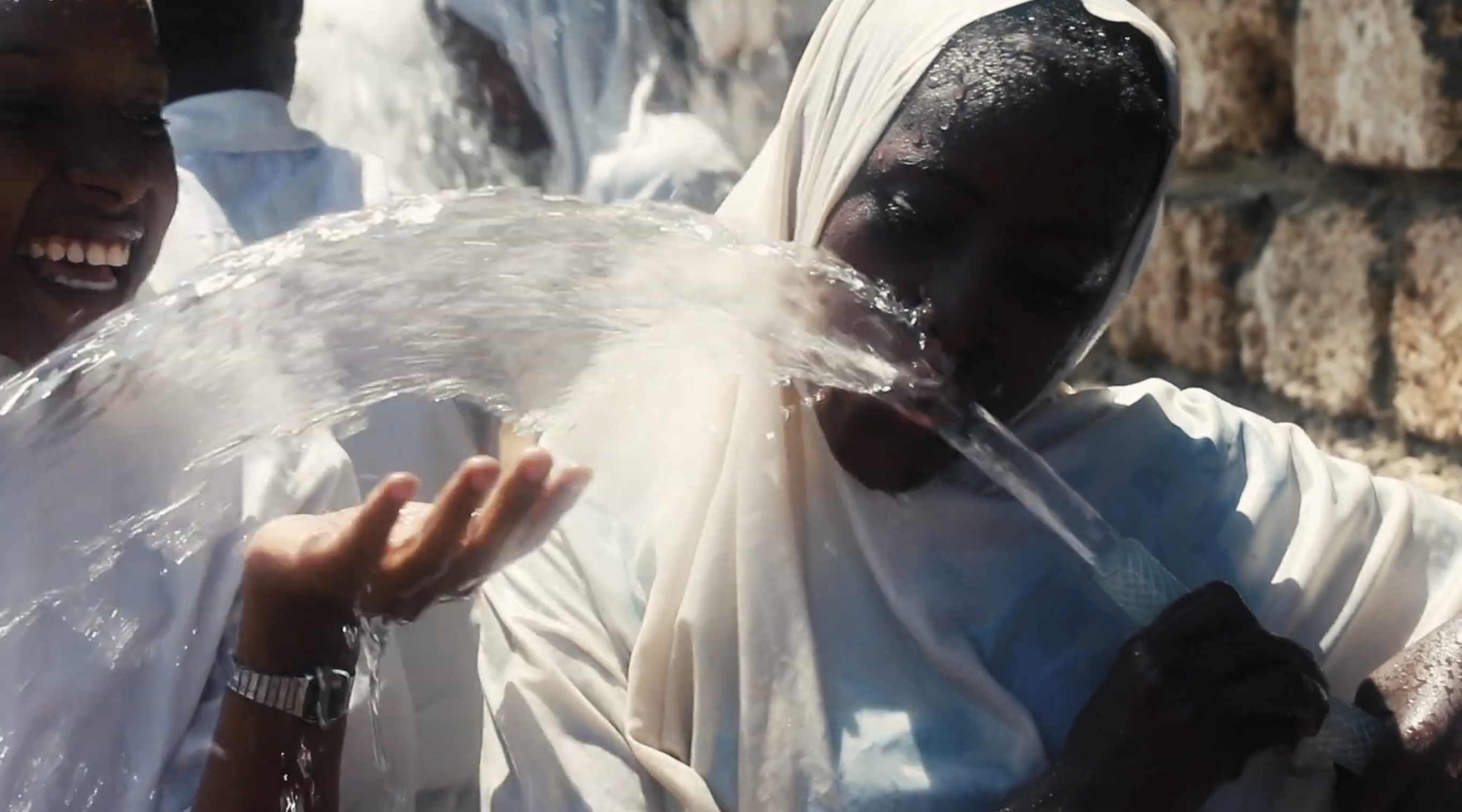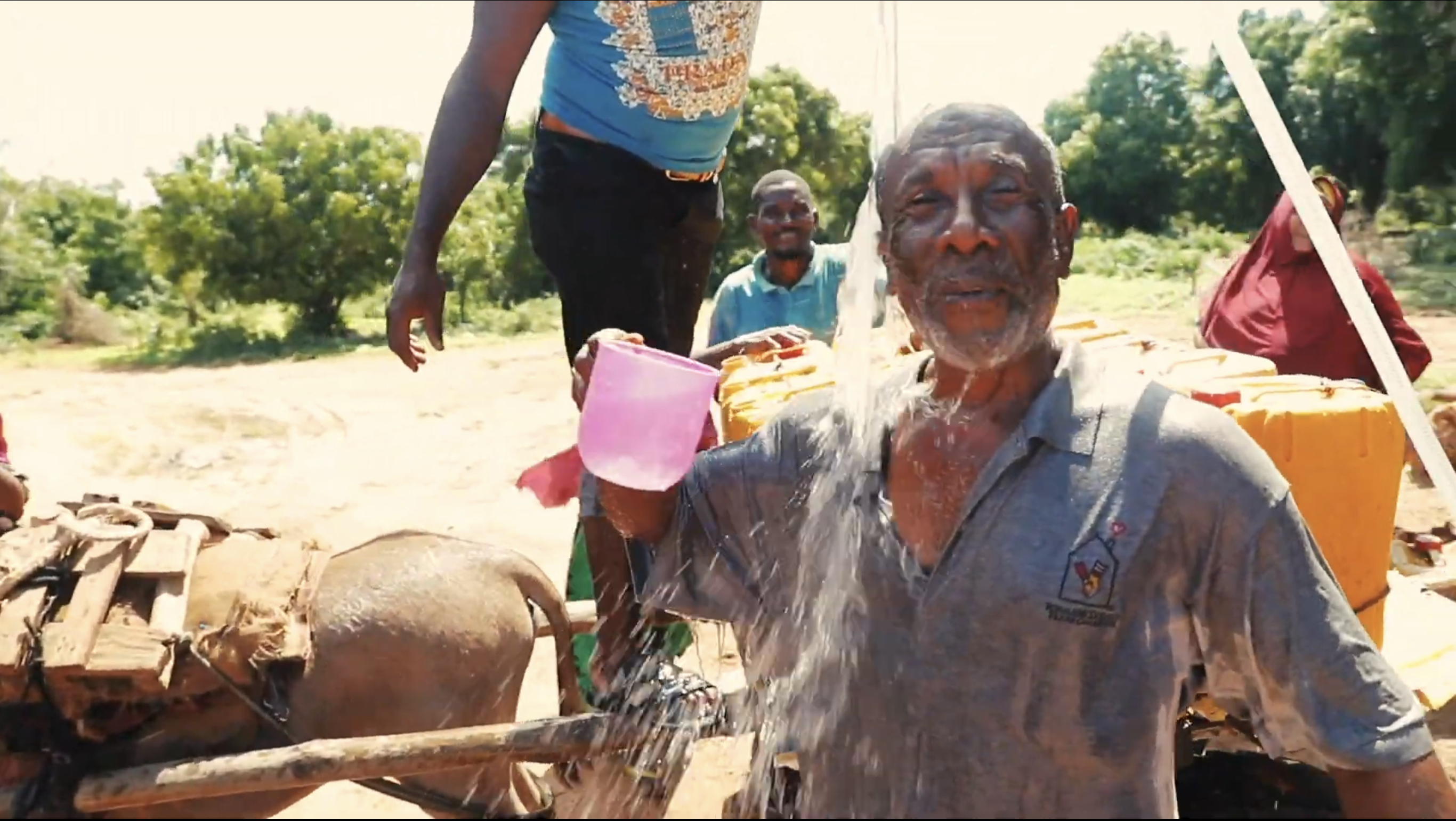- Inspiring People -
- 6mins -
- 897 views
In this village in Kenya they drink 75,000 litres of sea water a day
NGO GivePower is on a mission to bring clean drinking water to millions of people around the world, beginning with the Kenyan community of Kiunga.
GivePower Introduces First Solar Water Farm
People have been attempting to turn seawater into drinking water for millennia, but generally the process is neither energy-efficient nor affordable. At a newly constructed facility in Kenya, a nonprofit called GivePower is tackling the challenge of turning seawater into drinking water using solar power. The desalination system, which started operating in the coastal area of Kiunga in July 2018, can create 75,000 litres (19,800 gallons) of fresh drinking water each day — enough for 35,000 people.

Solar Water Farm is breakthrough blueprint solution for coastal areas struggling with water scarcity
GivePower is on a mission to bring clean drinking water to millions of people around the world, beginning with the community of Kiunga, Kenya.
Kiunga, is a small fishing community of about 3500 people located just a few miles south of the Somalian border. The village is situated along the coast of the stunning Indian Ocean and the area is home to an important marine conservation reserve. It’s also an area that has suffered extreme drought for many years.
The location of Kiunga close to the shore with abundant seawater made it an ideal location for the first GivePower Solar Water Farm.
GivePower’s Solar Water Farm: A Breakthrough Clean Tech Solution
GivePower’s Solar Water Farm is a breakthrough blueprint solution for coastal areas struggling with water scarcity. With advanced filtration systems and new solar-powered desalination technology, GivePower is converting sea and brackish salt water into clean and healthy water.
Each solar water farm produces enough fresh drinking water for 35,000 people every single day. Compared to most ground well systems, the GivePower’s Solar Water Farm produces a higher quality of water over a longer period of time with no negative environmental impact.
Source: GivePower.org

1 in 3 people globally do not have access to safe drinking water – say UNICEF & WHO
A new report on inequalities in access to water, sanitation and hygiene also reveals more than half of the world does not have access to safe sanitation services.
Billions of people around the world are continuing to suffer from poor access to water, sanitation and hygiene, according to a new report by UNICEF and the World Health Organization.
Some 2.2 billion people around the world do not have safely managed drinking water services, 4.2 billion people do not have safely managed sanitation services, and 3 billion lack basic handwashing facilities.
The Joint Monitoring Programme report, Progress on drinking water, sanitation and hygiene: 2000-2017: Special focus on inequalities finds that, while significant progress has been made toward achieving universal access to basic water, sanitation and hygiene, there are huge gaps in the quality of services provided.
“Mere access is not enough. If the water isn’t clean, isn’t safe to drink or is far away, and if toilet access is unsafe or limited, then we’re not delivering for the world’s children,” said Kelly Ann Naylor, Associate Director of Water, Sanitation and Hygiene, UNICEF.
“Children and their families in poor and rural communities are most at risk of being left behind. Governments must invest in their communities if we are going to bridge these economic and geographic divides and deliver this essential human right.”
The report reveals that 1.8 billion people have gained access to basic drinking water services since 2000, but there are vast inequalities in the accessibility, availability and quality of these services.
Source: WHO-International

Why GivePower technology is so important
It is estimated that 1 in 10 people (785 million) still lack basic services, including the 144 million who drink untreated surface water.
The data shows that 8 in 10 people living in rural areas lacked access to these services and in one in four countries with estimates for different wealth groups, coverage of basic services among the richest was at least twice as high as among the poorest.
“Countries must double their efforts on sanitation or we will not reach universal access by 2030,” said Dr Maria Neira, WHO Director, Department of Public Health, Environmental and Social Determinants of Health.
“If countries fail to step up efforts on sanitation, safe water and hygiene, we will continue to live with diseases that should have been long ago consigned to the history books: diseases like diarrhoea, cholera, typhoid, hepatitis A and neglected tropical diseases including trachoma, intestinal worms and schistosomiasis. Investing in water, sanitation and hygiene is cost-effective and good for society in so many ways. It is an essential foundation for good health.”
The report also says that 2.1 billion people have gained access to basic sanitation services since 2000 but in many parts of the world the wastes produced are not safely managed.
It also reveals that 2 billion people still lack basic sanitation, among whom 7 out of 10 live in rural areas and one third live in the Least Developed Countries.
Finally, the report highlights new data showing 3 billion people lack basic hand-washing facilities with soap and water at home in 2017.
It also shows that nearly three quarters of the population of the Least Developed Countries did not have basic handwashing facilities.
Every year, 297 000 children under 5 years die due to diarrhoea linked to inadequate WASH.
Poor sanitation and contaminated water are also linked to transmission of diseases such as cholera, dysentery, hepatitis A, and typhoid.
“Closing inequality gaps in the accessibility, quality and availability of water, sanitation and hygiene should be at the heart of government funding and planning strategies. To relent on investment plans for universal coverage is to undermine decades worth of progress at the expense of coming generations,” said Kelly Ann Naylor.
Source: WHO-International

Worldwide, one third of people don’t have access to safe drinking water
According to UNICEF and the World Health Organization (WHO), by 2025, half the world’s population is expected to live in water-stressed areas. Cities like Cape Town, South Africa; Chennai, India; and Beijing, China already face dwindling water supplies.

